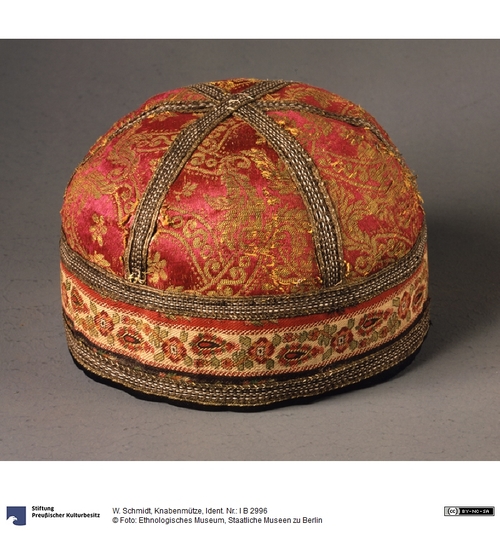"Mützen aus Zentralasien und Persien" Abb. 119 / S. 270
Mit Wasser aufgeweichter Pappe wurde mit Weizenkeimstärke getränkt und über einer Form aus Holz oder Ton rund gearbeitet. Nach dem Trocknen ist eine zweite Pappschicht mit Stärke getränkt und auf die erste geklebt worden, anschließend eine dritte, sehr dünne weiße Pappschicht.
Auf die getrocknete Pappform klebte man außen die sechs Mützenteile und den Randstreifen, innen das durch Abnäher und Einschnitte der Form angepaßte Futter. Abschließend klebte man die Zierbänder auf die Kanten und über freie Stellen zwischen den Mützenteilen. Sie sind 11 cm breit.
Der Brokat könnte aus der Türkei stammen.
Weizenkeimstärke klebt sehr gut und schlägt bei kräftigem Stoff nicht durch. Bei tartem Seidenstoff wird Reisstärke verwendet.
Angaben zur Herkunft:
W. Schmidt, Sammler
Iran (Land/Region)
Täbris (Stadt oder Gemeinde)
en

